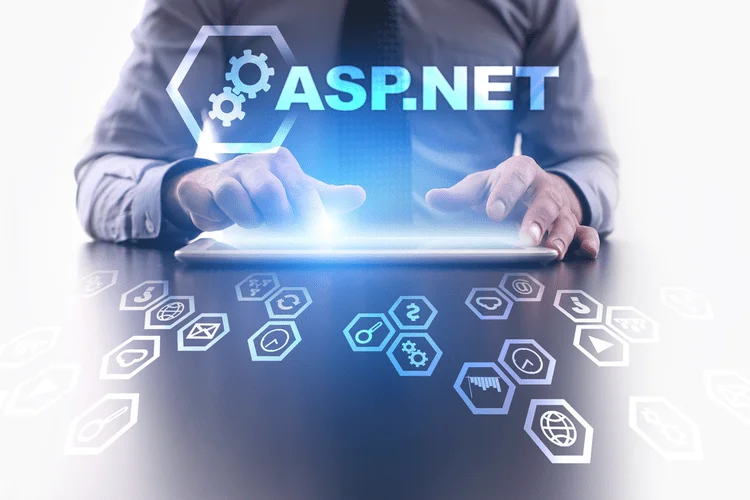It includes the core network and a set of routers, switches, and different units closer to finish customers than the core community. Edge computing’s decentralized nature means one compromised edge system doesn’t have an effect on knowledge on all other devices. Extra security measures can be implemented directly on edge gadgets like firewalls or intrusion detection methods. “The entire level of edge computing is to get nearer to units, to cut back the quantity of information that needs to be moved around for latency reasons, to get closer in order that responses are faster,” said Matt Trifiro, chief advertising officer at Vapor IO.

Understanding the “why” demands a clear understanding of the technical and enterprise issues that the organization is making an attempt to unravel, corresponding to overcoming community constraints and observing knowledge sovereignty. Edge computing is a distributed info expertise (IT) architecture during which shopper information is processed on the periphery of the network, as close to the originating supply as attainable. Manage and promote safety cost-effectively across thousands of edge servers and tons of of thousands of edge units. In the past, the promise of cloud and AI was to automate and velocity up innovation by driving actionable perception from knowledge. But the unprecedented scale and complexity of information that’s created by connected gadgets has outpaced community and infrastructure capabilities. The explosive development and growing computing power of IoT devices has resulted in unprecedented volumes of information.
Tips On How To Explain Edge Computing In Plain English
We also asked different experts to chime in with their explicit definitions of edge computing in clear terms to which will prove useful for IT leaders in varied discussions – including those with non-technical folks. Healthcare startup Innocens BV identifies infants vulnerable to developing sepsis with predictive edge computing. Edge computing presents a powerful strategy to assist alleviate future community congestion pushed by new technologies.
Edge computing eases that burden by shifting a few of the processing nearer to its level of origin — as close as potential to the place the action happens. The adoption of edge computing has caused information analytics to an entire new stage. More and extra firms are relying on this technology for data-driven operations that require lightning-fast outcomes edge computing explained. Get started with this course right now to speed up your profession in cloud computing. Example of edge computing could be present in employee safety and security, the place data from on-site cameras, safety devices, and sensors is processed to forestall unauthorized web site entry and monitor worker compliance with security policies.

Remember that it may be troublesome — or even impossible — to get IT employees to the physical edge site, so edge deployments ought to be architected to offer resilience, fault-tolerance and self-healing capabilities. Monitoring tools should supply a transparent overview of the distant deployment, allow easy provisioning and configuration, supply complete alerting and reporting and preserve security of the installation and its data. Edge monitoring usually entails an array of metrics and KPIs, such as website availability or uptime, network performance, storage capacity and utilization, and compute sources.
Why Edge Computing Is The Way Ahead For Cloud
Edge computing has emerged as a viable and essential architecture that helps distributed computing to deploy compute and storage sources nearer to — ideally in the same physical location as — the information source. In general, distributed computing models are hardly new, and the ideas of distant places of work, branch offices, knowledge middle colocation and cloud computing have a long and confirmed monitor record. With edge computing, the principle objective is to process information at the actual location, or as close as possible, to where it’s being created and used. To accomplish this, data is processed proper outdoors of a core community (which encompasses the web and IP technologies) on the community edge, the realm the place units and local servers hook up with and communicate with the internet. Edge computing is the practice of placing computing, information storage and utility resources closer to data sources (like IoT units or native databases and servers). Reducing the bodily proximity between these entities reduces data latency and accelerates overall community performance.
- Edge computing enables real-time analytics with processing much nearer to the asset, that means there is less reliance on good high quality connectivity to a centralised cloud.
- The prospect of shifting a lot information in situations that may usually be time- or disruption-sensitive puts unimaginable pressure on the global web, which itself is often subject to congestion and disruption.
- In this article, we deep dive 4 examples of how a theoretical use case has been spun right into a live deployment, both on the World Cup to throughout the sporting world.
- The addition of recent IoT devices can also enhance the opportunity for the attackers to infiltrate the system.
- STL Partners has a bespoke analysis service centered on serving to those inside the edge ecosystem perceive edge use cases .
- “The entire point of edge computing is to get nearer to gadgets, to scale back the amount of knowledge that must be moved around for latency reasons, to get nearer so that responses are sooner,” stated Matt Trifiro, chief advertising officer at Vapor IO.
Adopting edge computing is a excessive precedence for a lot of telco service suppliers as they modernize their networks and search new sources of income. Specifically, many service suppliers are moving workloads and services out of the core community (in datacenters) towards the network’s edge, to factors of presence and central offices. Edge computing is a local source of processing and storage for the data and computing wants of IoT devices, which reduces the latency of communication between IoT units and the central IT networks these units are connected to. One of the main benefits of edge computing is its capacity to optimize assets. If a difficulty must be addressed, solely the required providers and performance are deployed, which decreases bandwidth utilization and prices. Furthermore, if a tool loses connection to the core datacenter or cloud, it’s going to proceed to operate and maintain remote resiliency.
What Is An Edge Device?
Edge devices may be in distant areas and should not have entry to the identical level of connectivity because the cloud and even different cloud-based providers. This means some applications will run slower if they depend on real-time communication between gadgets and the cloud. Edge devices are typically located near their customers on the end of a community.
Finally, edge computing presents an additional alternative to implement and guarantee information security. Although cloud providers have IoT providers and focus on advanced analysis, enterprises remain involved concerning the safety and security https://www.globalcloudteam.com/ of data as soon as it leaves the sting and travels again to the cloud or knowledge middle. Computing duties demand suitable architectures, and the structure that fits one sort of computing task would not necessarily fit all kinds of computing tasks.

Combining edge and AI technology may detect anomalies extra rapidly in medical photographs and spotlight quick health issues. Examples of this embody optimising bus frequency given fluctuations in demand, managing the opening and shutting of additional lanes, and, in future, managing autonomous car flows. Edge computing might be a core know-how in additional widespread adoption of good grids and may help enable enterprises to better manage their energy consumption. An enterprise application platform with a unified set of tested companies for bringing apps to market on your selection of infrastructure.
The potential purposes of edge have expanded far past simply manufacturing and IoT. Edge could be included to drive speedy decision-making and enhance user experiences by rising relevance at every touchpoint. Now, edge is helping create new insights and experiences, enabled by the larger cloud backbone. Today, less than 10 p.c of enterprise-generated data is created and processed at the edge, based on Gartner; but by 2025, that may grow to seventy five %, Gartner predicts.
As all networks have a restricted bandwidth, the amount of information that can be transferred and the number of units that may process that is restricted as well. By deploying the info servers on the points the place knowledge is generated, edge computing allows many devices to operate over a much smaller and extra environment friendly bandwidth. IoT needs compute energy nearer to where a bodily device or information source is situated. Multi-access edge computing (MEC) is a sort of community structure that gives cloud computing capabilities and an IT service setting on the edge of the network. The goal of MEC is to cut back latency, guarantee extremely efficient community operation and repair delivery, and improve the customer experience.
Edge computing is a distributed IT architecture which strikes computing sources from clouds and knowledge centers as shut as potential to the originating source. The main objective of edge computing is to reduce latency necessities whereas processing data and saving network prices. Edge units are physical hardware corresponding to IoT gateways, industrial controllers, good shows, point of gross sales terminals, vending machines, robots, and drones. In many cases, organizations can have 1000’s of edge devices throughout their architecture, all of which can be managed from a centralized location. Edge computing is the deployment of computing and storage sources at the location where data is produced. This ideally puts compute and storage on the similar level as the information supply at the community edge.

Make certain there’s a simple method to govern and implement the policies of your enterprise.
Discover Taikun Cloudworks In 2 Minutes!
A successful bridge utility, one which — to borrow a product phrase — crosses the chasm, shifting from early adopters to the broader public. Crown Capital — a associate of Vapor IO and the biggest proprietor of wireless infrastructure in the United States — has lots of both, together with in Chicago, Illinois, where its expansive fiber routes join Vapor IO’s edge modules. After railroad companies used their land-grant rights to have telco companions run fiber-optic strains along rail lines, it also became a significant fiber hub.
Edge computing also allows native knowledge processing earlier than it returns to the cloud for storage or evaluation. This signifies that gadgets could make decisions with out waiting for directions from a central server, which increases their responsiveness and reduces latency when interacting with different units in the IoT ecosystem. In some instances, connecting an end gadget directly to the internet is impossible or economically viable. Examples include mobile units that work with no connection or sensors working in remote areas. In these cases, edge computing can retailer data domestically on the system till it can be transmitted via Wi-Fi or mobile community when a possibility arises. In today’s ever-evolving panorama of information administration, the game-changing idea of edge computing has emerged.
The cloud can get centralized computing much nearer to an information supply, but not on the network edge. The world’s information is expected to grow 61 % to a hundred seventy five zettabytes by 2025.[17] According to analysis firm Gartner, around 10 percent of enterprise-generated information is created and processed outside a standard centralized information heart or cloud. Sending all device-generated data to a centralized knowledge center or to the cloud causes bandwidth and latency issues. Edge computing offers a more efficient alternative; knowledge is processed and analyzed closer to the point where it’s created. Because data doesn’t traverse over a community to a cloud or data middle to be processed, latency is lowered. Edge computing—and mobile edge computing on 5G networks—enables quicker and more comprehensive information analysis, creating the chance for deeper insights, sooner response occasions and improved customer experiences.

